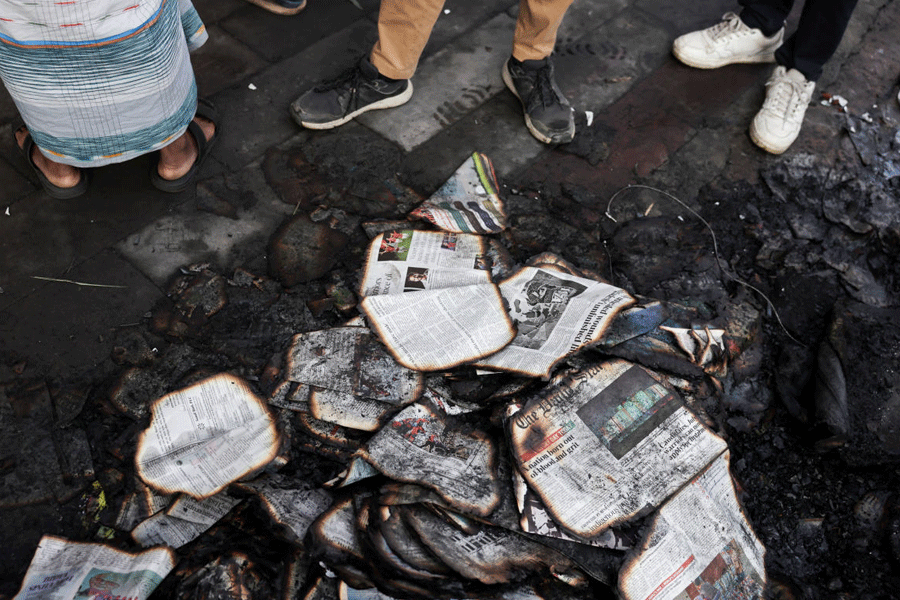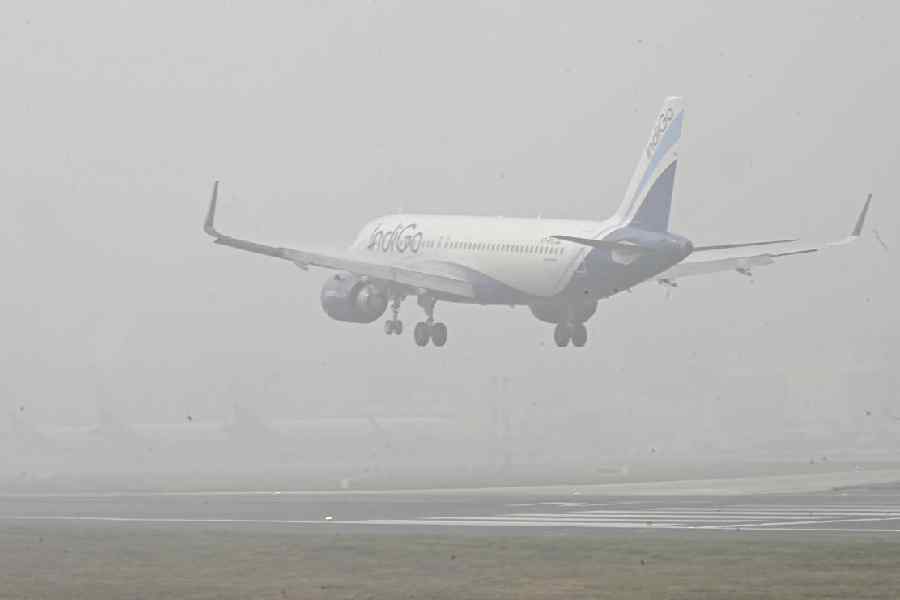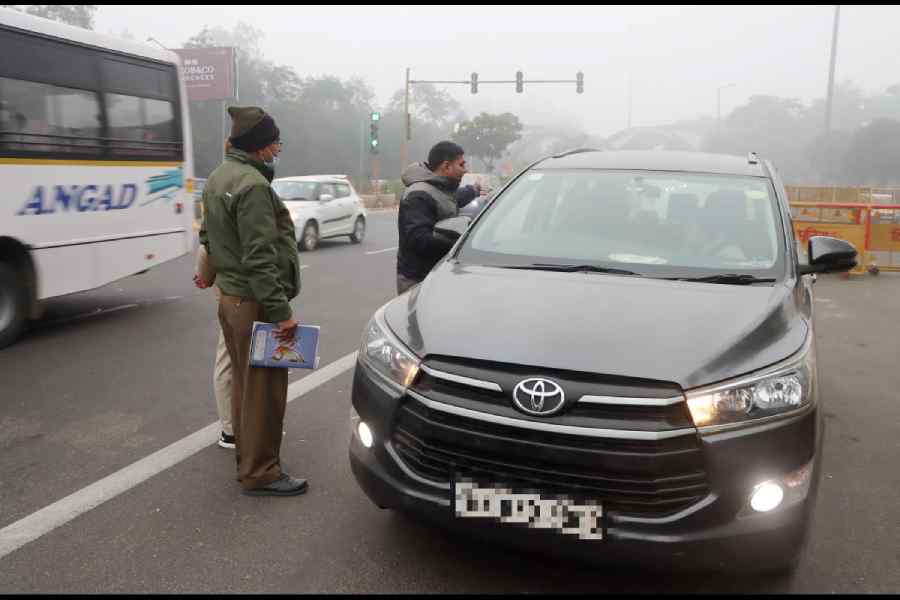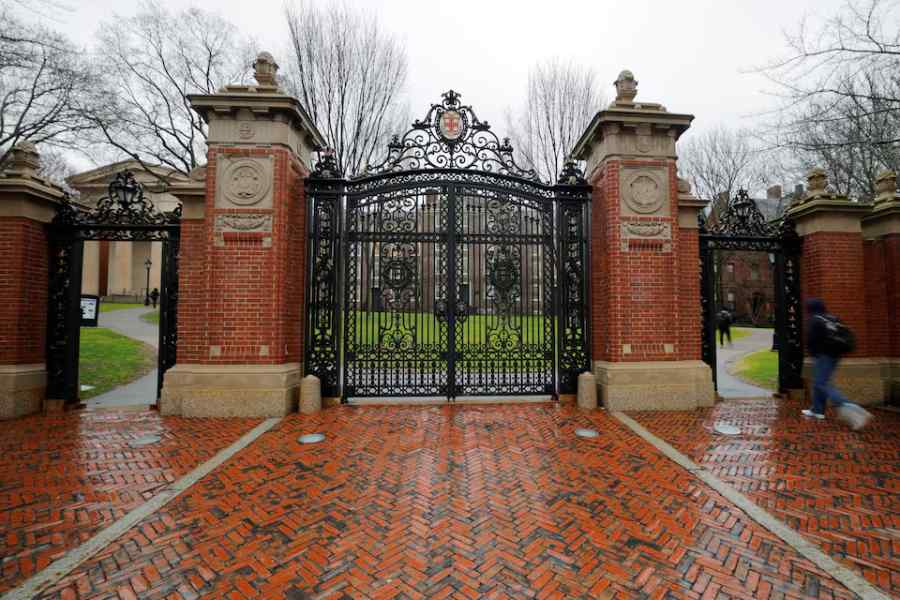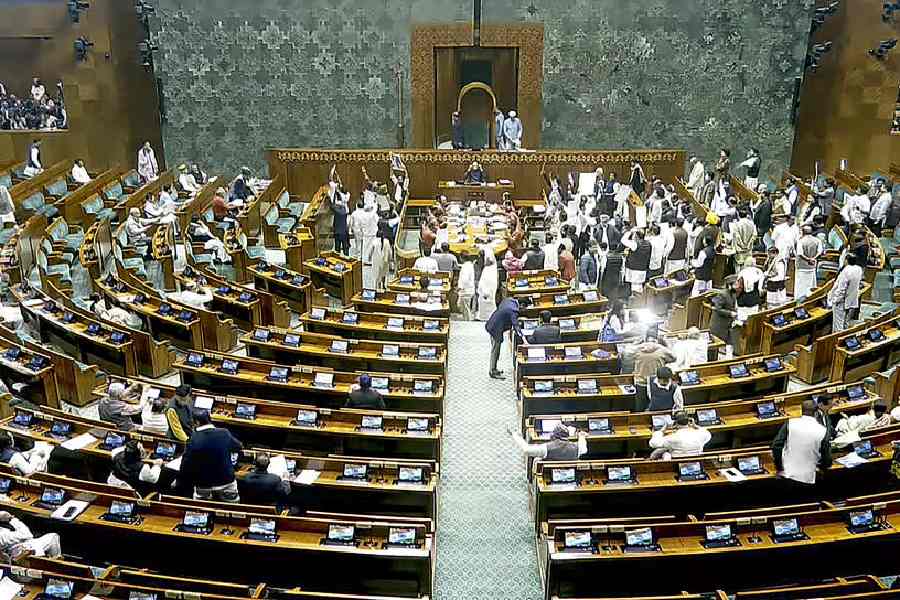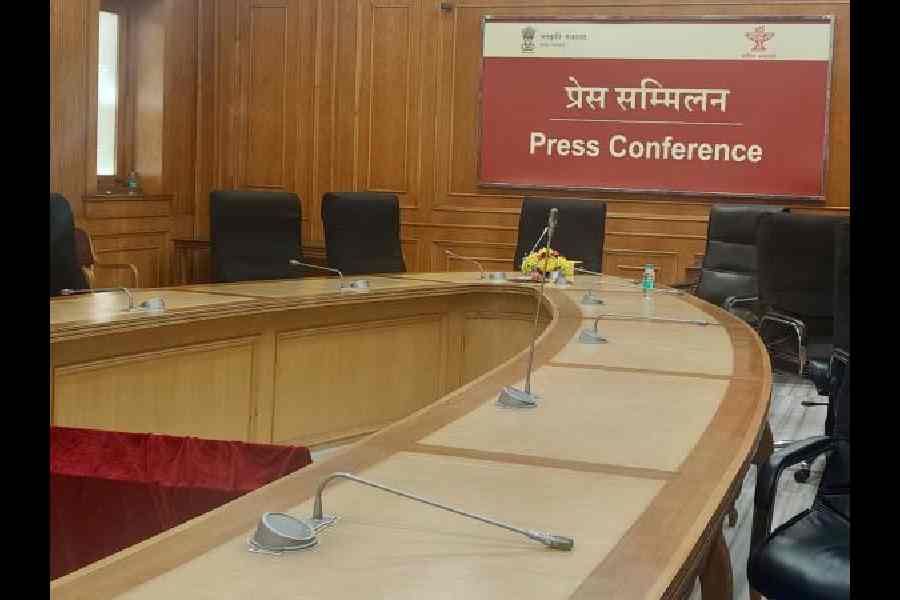 |
| Santosh Sarkar demolishing his Gobindapur home. Picture by Amit Datta |
Calcutta, Dec. 16: Around 9.15 am, when wreaths were being laid at Fort William to celebrate Vijay Diwas, a few kilometres away, Santosh Sarkar and his family quietly left their home at the Gobindapur railway colony along Rabindra Sarovar.
“Amra abar udbastu holam,” said Sarkar, one of nearly a crore refugees from Bangladesh who crossed over to India during the 1971 war to liberate what was then his country from Pakistani rule.
Sixty-two Mukti Joddhas, or freedom fighters, were at the Fort William celebrations, along with the chiefs of the Indian army, navy and the air force, not knowing that one of their former colleagues was taking another trip into an uncertain future on hired mini trucks that would take him and his family to a new site to start life afresh.
Sarkar, now 60, took part in the Bangladesh liberation war three decades ago and later set up a small thatched house at Gobindapur in south Calcutta along with other families, many of them refugees from 1971.
All of them bear testimony to the suffering Bengal has been and is still subjected to by the huge waves of refugee influx, once during Partition and again in 1971 that is a landmark in India’s history. Ironically, it was also the time from when Bengal’s economic decline started.
Prasanta Sur, a senior CPM leader and former minister for the refugee and rehabilitation department, said: “They (the Centre) spent crores of rupees and provided acres for their (refugees’) resettlement in north India but were extremely apathetic to the refugees of Bengal, Assam and Tripura.”
Of the one crore refugees who came into Bengal in 1971, rough estimates suggest some 2-3 lakh stayed back in Calcutta. No one has calculated the economic and social cost of making room for these people who had lost everything.
“They had nothing legal in this city and had to fight for recognition. The refugees have survived through long and tough movements,” said Sur, who has seen it all.
Although complaints about the Centre treating Bengal shabbily have not been rare in the past, no government of the state ? nor even a leader ? has ever asked Delhi why it should not bear the cost of its 1971 glory.
While the areas in Delhi provided by the central government to refugees from western Pakistan to set up home, including the Bengalis’ Chittaranjan Park, have now become prime properties with plots commanding prices of Rs 1 crore and more, the Sarkars have only been kicked around in Calcutta.
Gouranga Lal Mondal, Parimal Halder, Subharanjan Mondal, Shambhu Das, Mira Majumdar ? the list of refugees from 1971 and Partition is long at the Gobindapur colony that is now empty after a court order directed its “illegal” inhabitants to move out by December 15.
Back in 1971, they had walked through the fields of Bangladesh at night, paid middlemen and crossed the border, only to end up on the platforms of Sealdah station. Calcutta had almost turned into a city of refugees. Squatters built slums almost wherever they could find some empty land, thus creating what were to become illegal colonies later, Gobindapur being one of them.
On Friday, they queued up in front of Naba Santi Sangha Club, the office of the Ballygunge-Tollygunge Railway Sangram Committee, for a word of hope. There was none.
“We were forced to leave our home during the war. The government is now uprooting us once again and giving us a piece of barren land with no infrastructure,” said Gouranga.
Joydeb Mondal has a similar story. He came at a young age from Bangladesh with his parents and settled at Gobindapur. Today, he has lost his house and given away three sons to a mission. “We do not have a place to live, so there was no other alternative,” said Bula, his wife.
There are others like 86-year-old Nanigopal Sinha, who had crossed over from erstwhile East Pakistan in 1947 and were rendered homeless today again. “Then I had the strength to fight the battle of life. Now I have resigned myself to fate,” he said.





